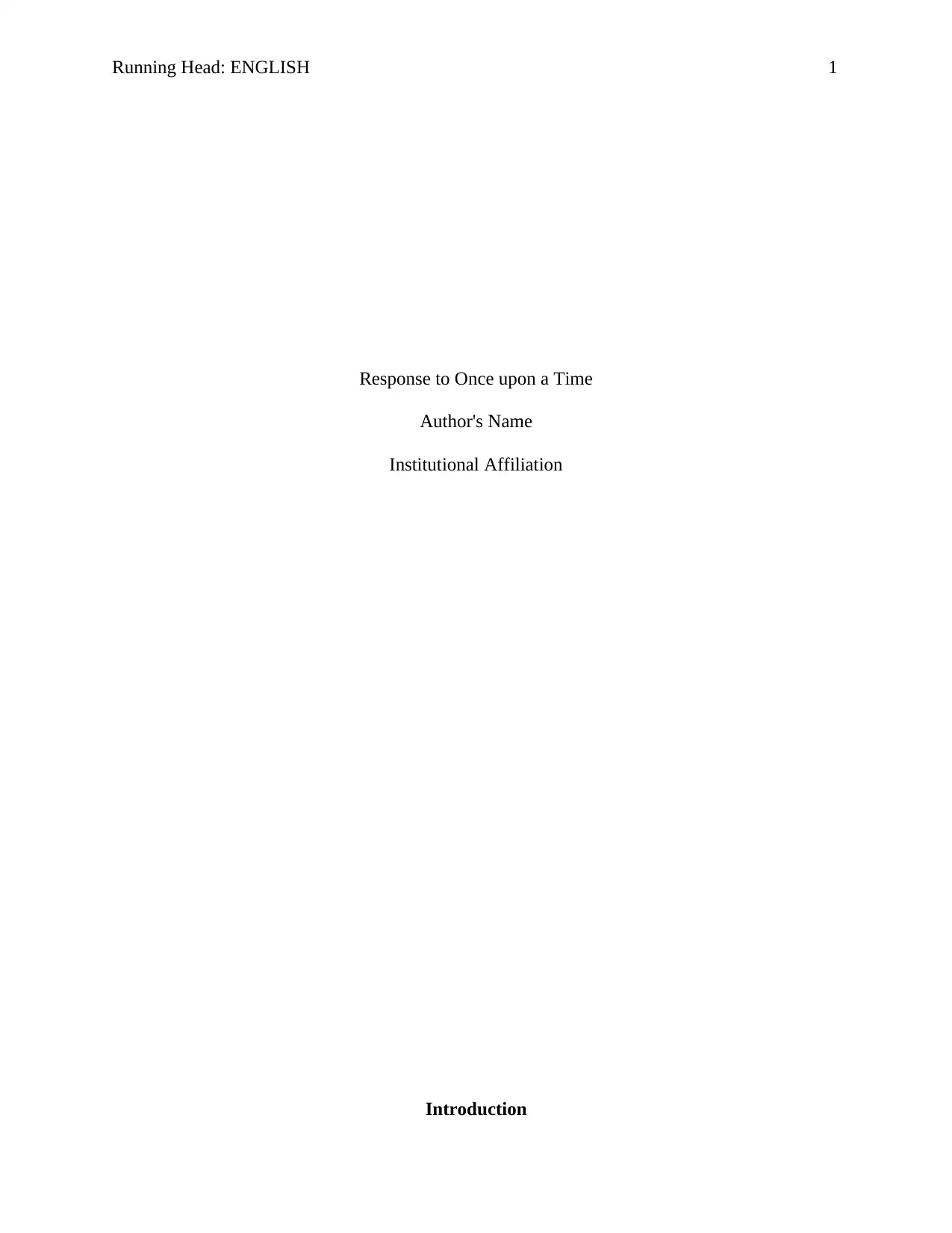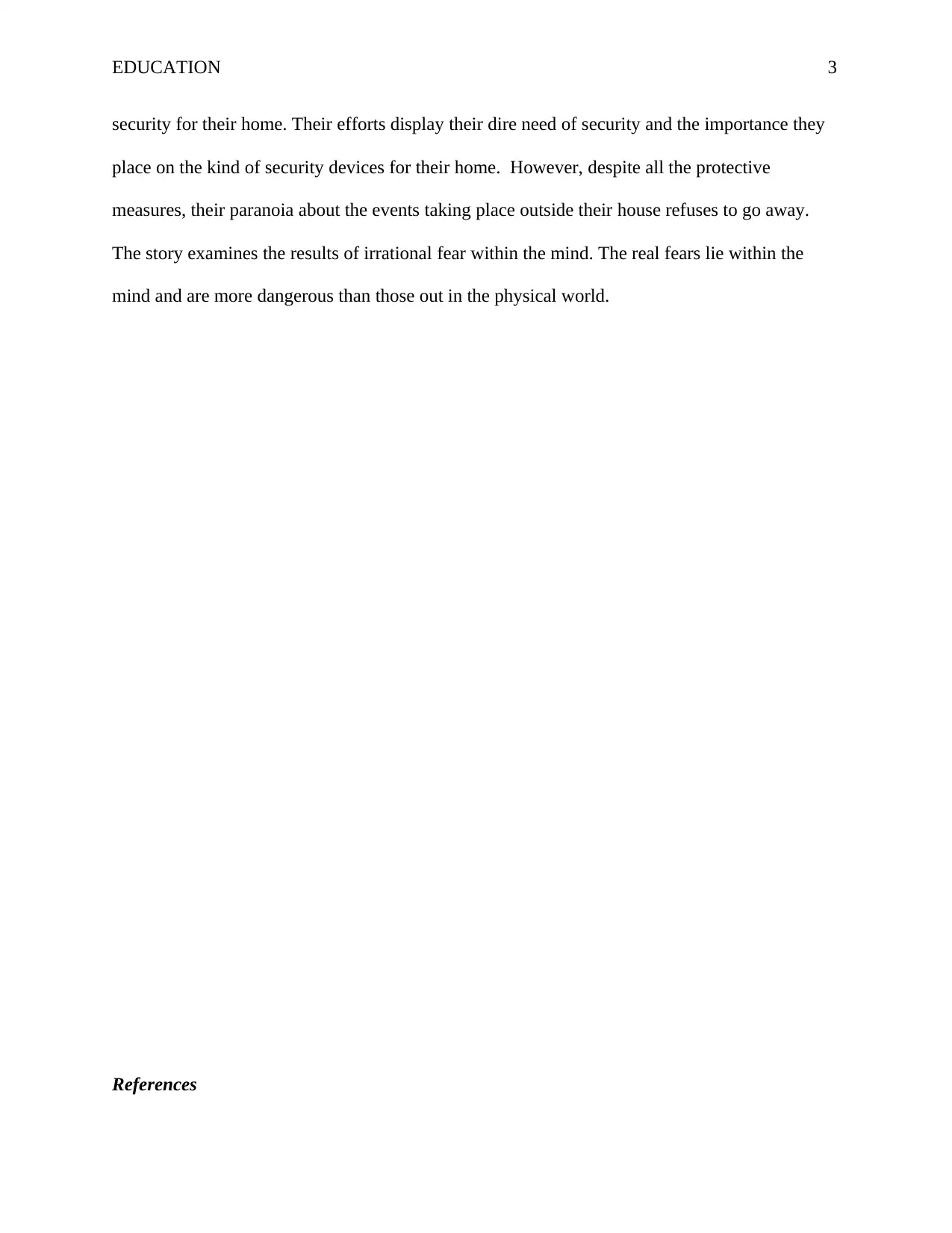ENGLISH 1: Response to Fear and Security in Gordimer's Story
VerifiedAdded on 2023/06/03
|4
|635
|294
Essay
AI Summary
This essay provides a detailed analysis of Nadine Gordimer's short story, "Once Upon a Time," focusing on the pervasive theme of fear and its impact on a family living in South Africa. The essay argues that the story explores how the fear of the unknown and urban unrest leads the family to prioritize security measures, ultimately isolating them from the beauty and pleasures of life. It highlights the psychological effects of fear, suggesting that the real threats lie within the mind and can be more damaging than external dangers. The analysis references specific passages from the story to support the interpretation of fear as a central obstacle to human happiness and a form of self-imposed captivity.
1 out of 4





![[object Object]](/_next/static/media/star-bottom.7253800d.svg)